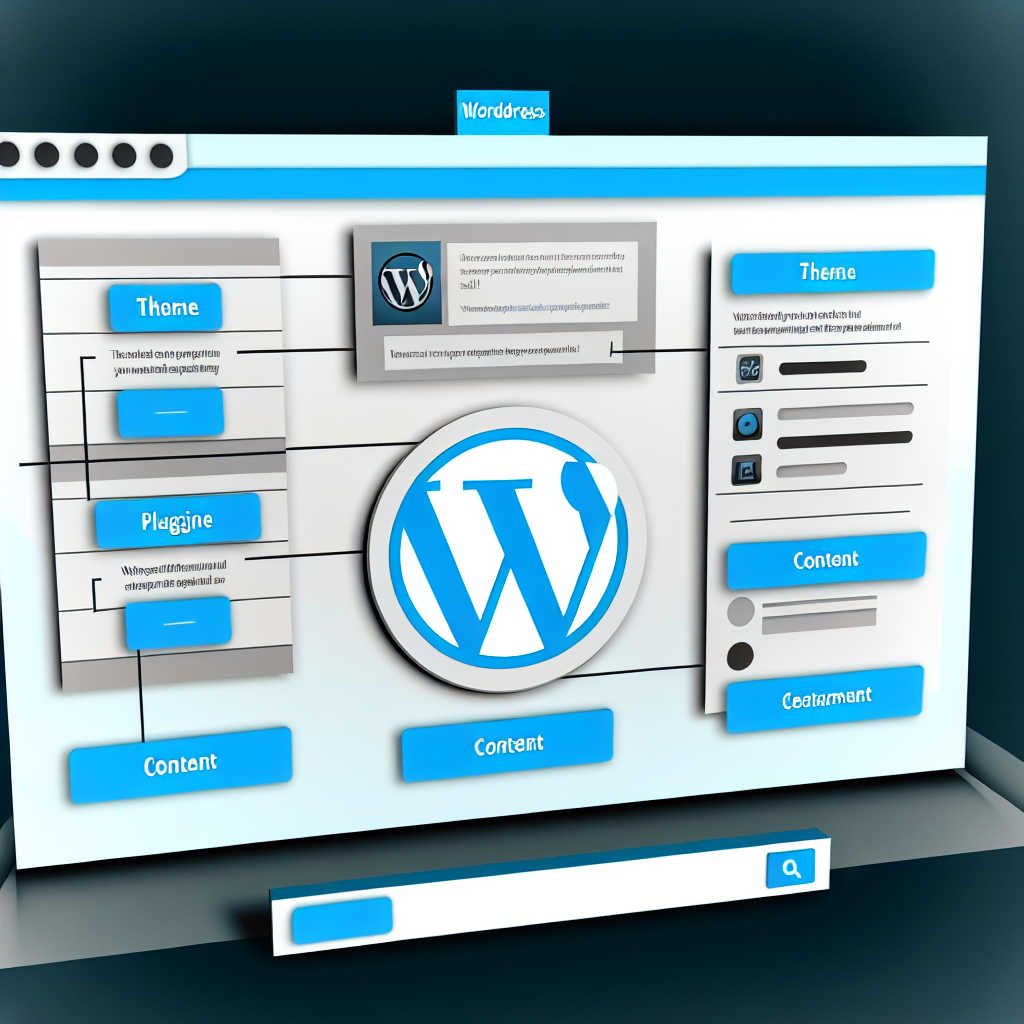**How to Launch WordPress Without cPanel**
In today’s digital landscape, establishing an online presence has never been more crucial, and WordPress remains one of the most popular platforms for creating websites. However, many new users often feel daunted by technical jargon and the necessity of using cPanel for setup. The good news is that you can start a WordPress website without cPanel, unlocking a more streamlined approach to website creation. This article will guide you through the essential steps to launch your WordPress site without the complexities that cPanel often entails. Whether you’re a business owner, a blogger, or a creative professional, you can successfully navigate the process of building a WordPress site on your own terms. Let’s dive into the essentials you need to know to get started!
- Here are three suggested section headlines for the article:
- 1. **Understanding the Basics: What You Need to Start a WordPress Website Without cPanel**
Here are three suggested section headlines for the article:
# How to Launch WordPress Without cPanel
Launching a WordPress website is an exciting venture, but many people feel daunted by the technical requirements. If you’re wondering how to start a WordPress website without cPanel, you’re not alone. Fortunately, there are several alternative methods that can simplify the process and help you get your site up and running with ease. In this article, we’ll explore these methods and guide you through the steps necessary to launch your WordPress site without relying on cPanel.
## Understanding Alternatives to cPanel for WordPress Installation
While cPanel is a popular web hosting control panel that offers an array of tools for managing your website, it’s not the only option available. Here are a few alternative approaches to consider when you want to start a WordPress website without cPanel:
### 1. Use WordPress Hosting Providers
Many hosting companies offer WordPress-specific hosting plans that come with user-friendly interfaces and one-click installations. This method allows you to bypass the need for cPanel entirely. Here’s how you can get started:
– **Choose a Managed WordPress Hosting Provider**: Look for providers like Bluehost, SiteGround, or WP Engine, which specialize in WordPress hosting.
– **Sign Up for a Plan**: Select a plan that fits your needs and budget.
– **One-Click Installation**: Most managed WordPress hosting services provide a straightforward installation process that allows you to set up WordPress with just a click.
### 2. Install WordPress Manually via FTP
If you prefer a more hands-on approach, you can install WordPress manually without cPanel by using an FTP client. This method gives you greater control over the installation process:
– **Download WordPress**: Visit the official WordPress.org website and download the latest version of WordPress.
– **Upload Files via FTP**: Use an FTP client like FileZilla to upload the WordPress files to your web server.
– **Create a Database**: Access your hosting provider’s dashboard (if they offer one) to create a new MySQL database and user.
– **Run the Installation**: Navigate to your domain in a web browser to complete the WordPress installation process.
### 3. Use Command Line Interface (CLI)
For those who are tech-savvy and comfortable with coding, using the command line interface (CLI) is an effective way to start a WordPress website without cPanel. Here’s a simplified process:
– **Access Your Server via SSH**: Use SSH to connect to your server.
– **Download WordPress**: Use commands to download the latest WordPress package directly to your server.
– **Configure wp-config.php**: Set up your WordPress configuration file with database details.
– **Run the Installation Script**: Finalize the setup by accessing your domain and completing the installation.
## Benefits of Starting a WordPress Website Without cPanel
Choosing to start a WordPress website without cPanel can offer several advantages:
– **Increased Flexibility**: You can tailor your installation process to fit your specific needs.
– **Enhanced Security**: Avoiding cPanel can reduce the risk of certain vulnerabilities associated with shared control panels.
– **Cost-Effective Solutions**: Some hosting providers offer competitive pricing for WordPress plans that eliminate the need for cPanel.
## Conclusion
Starting a WordPress website without cPanel is not only possible but can also provide a more tailored and efficient setup experience. Whether you choose a managed hosting provider, opt for manual installation via FTP, or utilize the command line interface, you have multiple pathways to launch your site successfully.
Ready to take the plunge? Start your WordPress journey today and explore the various hosting options available. For more tips and tricks on launching your website, feel free to reach out or dive deeper into our resources!
1. **Understanding the Basics: What You Need to Start a WordPress Website Without cPanel**
Starting a WordPress website without cPanel might sound daunting, but with the right tools and understanding, it can be a seamless process. Whether you’re looking to bypass the traditional hosting interface or utilize a different method, this guide will help you navigate the essentials of launching your WordPress site without relying on cPanel.
### Understanding the Basics: What You Need to Start a WordPress Website Without cPanel
To successfully start a WordPress website without cPanel, you’ll need to grasp the fundamental components involved in the process. Here’s what you should consider:
1. **Domain Name**: Your domain name is the web address where users will find your site. Choose a name that reflects your brand and is easy to remember. Domain names can be registered through various registrars.
2. **Web Hosting**: While cPanel is a common interface for hosting management, many hosting providers offer alternatives. Research hosting services that support WordPress installations through FTP (File Transfer Protocol) or SSH (Secure Shell). Some popular options include:
– DigitalOcean
– Bluehost (with WordPress installation via their dashboard)
– SiteGround
– A2 Hosting
3. **FTP Client**: To upload WordPress files without cPanel, you’ll need an FTP client like FileZilla or Cyberduck. This tool allows you to transfer files from your local computer to your web server.
4. **WordPress Installation Files**: Download the latest version of WordPress from the official WordPress.org website. This file will contain all the necessary components to set up your site.
5. **Database Setup**: Without cPanel, you’ll need to create a MySQL database manually. Most hosting services provide a way to create a database via their dashboard or through phpMyAdmin. Make sure to note the database name, username, and password for later use.
6. **Configuration Files**: After setting up your database, you will need to configure the `wp-config.php` file. This file contains crucial database connection details. Edit this file to include your database information.
7. **Domain Pointing**: Ensure that your domain name is correctly pointed to your web hosting server. This can typically be done through your domain registrar’s DNS settings.
8. **WordPress Installation**: Use your FTP client to upload the WordPress files to your web server. Once uploaded, navigate to your domain in a web browser to continue the installation process. Follow the on-screen prompts to complete the setup.
9. **Theme and Plugin Installation**: After successfully installing WordPress, you can enhance your site’s functionality by installing themes and plugins directly from the WordPress dashboard.
### Conclusion
Starting a WordPress website without cPanel is not only achievable but can also provide a greater understanding of web hosting mechanics. By following the steps outlined above, you can take control of your website setup and streamline your online presence.
Ready to take the plunge and start your WordPress website without cPanel? Explore your hosting options today and empower yourself with the tools to create an exceptional online experience! For more in-depth guidance, feel free to reach out or check our additional resources.
### How to Launch WordPress Without cPanel
Starting a WordPress website is a great way to establish an online presence, whether for personal blogging, professional portfolios, or business ventures. However, many new users often feel limited by traditional hosting methods that require cPanel access. The good news is that you can start a WordPress website without cPanel! In this article, we will guide you through the steps to launch your website seamlessly, even without this popular control panel.
—
## Understanding the Basics of WordPress Hosting
### What is WordPress?
WordPress is a powerful content management system (CMS) that allows users to create and manage websites easily. It offers a flexible platform with thousands of themes and plugins to customize your site.
### Why Choose to Start a WordPress Website Without cPanel?
While cPanel is a popular tool for managing web hosting, it’s not the only way to set up a WordPress site. Here are a few reasons why you might consider launching without it:
– **Simplicity**: Some hosting providers offer WordPress installation directly through their dashboards, eliminating the need for cPanel.
– **Performance**: Alternative management tools can offer faster load times and more streamlined interfaces.
– **Cost-Effectiveness**: Certain hosting solutions may not include cPanel in their packages, potentially lowering your hosting costs.
—
## Steps to Start a WordPress Website Without cPanel
### 1. Choose a Hosting Provider
Selecting the right hosting provider is crucial. Look for one that offers:
– **One-Click WordPress Installations**: Many hosts like Bluehost, SiteGround, and WP Engine provide this feature.
– **Good Customer Support**: Ensure they have a responsive support team.
– **Affordable Plans**: Look for hosting that fits your budget.
### 2. Register Your Domain Name
Your domain name is your website’s address. Choose a name that reflects your brand or content. Many hosting providers offer domain registration as part of their services.
### 3. Install WordPress
With your hosting plan in place, follow these steps:
– **Log into Your Hosting Dashboard**: Access the control panel provided by your host.
– **Locate the WordPress Installer**: Look for options like "Install WordPress" or "Website Setup."
– **Fill Out Required Information**: Enter your site name, admin username, and password.
– **Complete the Installation**: Follow the prompts to finalize the installation.
### 4. Customize Your WordPress Site
Once WordPress is installed, log into your WordPress dashboard:
– **Choose a Theme**: Navigate to Appearance > Themes to select a design that suits your style.
– **Install Essential Plugins**: Boost your site’s functionality by adding plugins for SEO, security, and performance.
– **Create Content**: Start adding pages and posts to fill your website with valuable information.
### 5. Launch Your Website
After customizing your site, it’s time to go live. Double-check all settings, test your site’s functionality, and then announce your launch on social media and other platforms.
—
## Conclusion
Starting a WordPress website without cPanel is not only possible but can also be a straightforward process with the right approach. By selecting a suitable hosting provider, registering your domain, and following the installation steps, you can have your site up and running in no time.
Ready to launch your WordPress website? Take the plunge today and explore the endless possibilities of online presence! For more tips and detailed guidance, feel free to reach out or visit our blog for more insights on web development.

